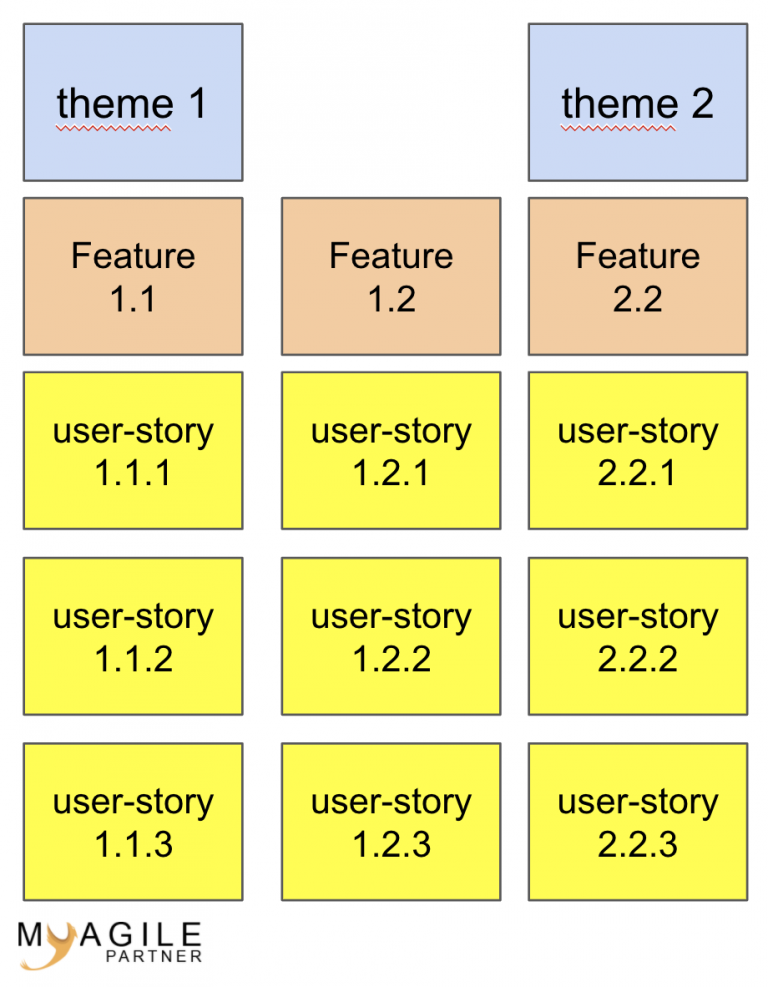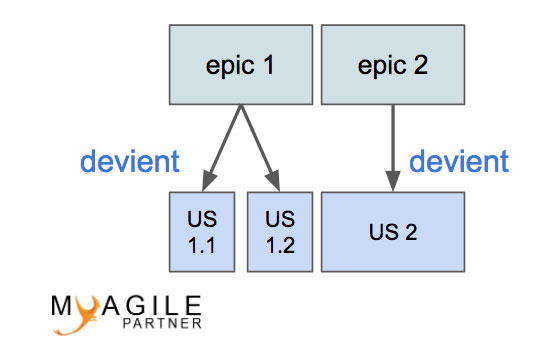
Creating a product backlog can be a daunting task with the multitude of elements it can contain. In this article, we’ll delve into these elements – features, user stories, epics, and themes – to help you navigate through the complexities of backlog management.
Before we dive in, it’s important to clarify that we won’t be discussing user stories in this article. If you’re unsure about what a user story is, we recommend reading our article on the definition of user stories.
As per the Scrum Guide, here’s what it says about the product backlog:
“The Product Backlog is an ordered list of everything that is known to be needed in the product. It is the single source of requirements for any changes to be made to the product.”
Admittedly, this definition might not shed much light on the subject, especially since “features” and “functions” can appear quite similar. Let’s break it down step by step.
Feature
A feature, often referred to as “fonctionnalité” in the French-speaking agile world, is a relatively straightforward concept. It’s a large, high-level element that will be broken down into multiple user stories. In the realm of agility, there’s generally a consensus on the definition of a feature.

Theme
The notion of a “theme” is a bit more nuanced. There are two prevailing interpretations in the agile community.
- Theme as a Synonym for Feature: Some agilists consider “theme” to be synonymous with “feature.” If your team finds these terms interchangeable, you’re free to use the one that resonates best with you.
- Theme as a Higher-Level Category: The second perspective posits that a product comprises overarching themes, each of which is further divided into features. Some find this additional layer complicates prioritization, which is a valid concern.
In this context, the hierarchy might look like this:
Theme > Feature > User Story

Epic
The term “epic,” which is rarely translated to “épopée” in the French-speaking agile community, is probably the most complex notion. Mike Cohn defines an epic as a large story that may or may not be broken down into user stories during development. It’s essentially described by a simple label.

An epic is initially a high-level idea represented by a label, which may later be refined into one or more user stories.
SAFe Framework Perspective: In the SAFe (Scaled Agile Framework), an epic is positioned as a higher level than a feature.

Jira and Common Usage: Interestingly, widely-used software tools like Jira employ the term “epic” but not “feature.” Teams can manually change “Epic” to “Feature,” but adding an extra level for both requires additional plugins.
In essence, whether an epic is treated as a feature in your team’s context is not a major issue, as long as the team aligns on its usage.
In conclusion, understanding these backlog elements – features, user stories, epics, and themes – is pivotal for effective agile project management. Each serves a unique purpose and contributes to the successful development and delivery of a product. So, whether you’re dealing with a grand feature, a thematic vision, or an epic narrative, clear backlog management is key to agile success.

Be the first to comment